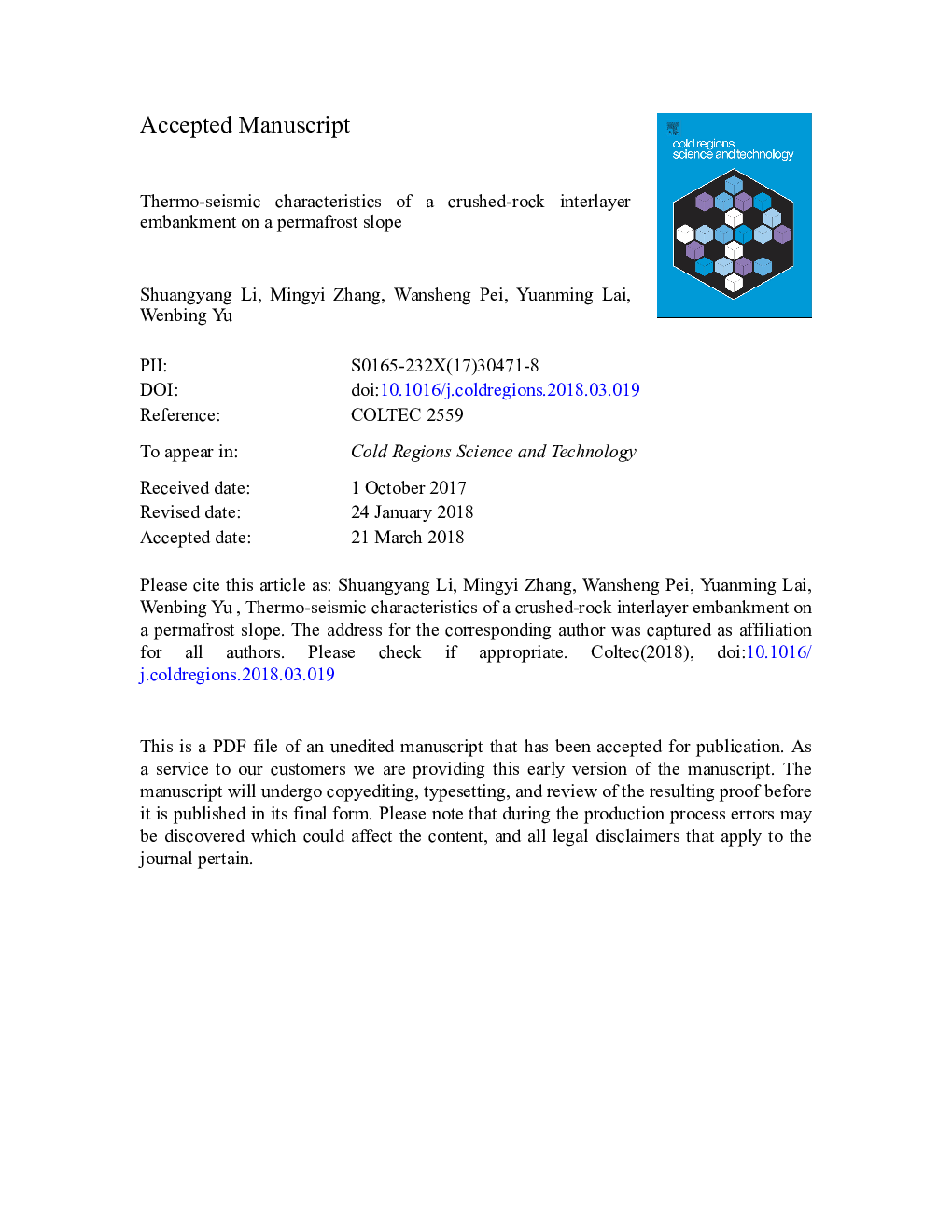| Article ID | Journal | Published Year | Pages | File Type |
|---|---|---|---|---|
| 8906487 | Cold Regions Science and Technology | 2018 | 45 Pages |
Abstract
Crushed rock is a highly porous medium widely used to cool embankments in permafrost regions. The thermal transfer of a crushed-rock embankment (CRE) was fully investigated by experimental and numerical methods. However, the CRE's mechanical process, especially under dynamic loading, is a key factor for its safe operation but has been ignored. To study the dynamic characteristics of the CRE, we proposed a thermo-dynamic coupled model for the CRE, selected a crushed-rock interlayer embankment (CRIE) on a permafrost slope, and conducted a series of numerical computations over four seasons in its 20th service year. The CRIE temperature changed seasonally, causing seasonal differences in mechanical behaviors and seismic responses. By comparing the acceleration, velocity, displacement and pore water pressure responses of the CRIE, the seismic damage mechanism of the CRIE is analyzed and the time at which the earthquake-induced damage of the CRIE is the heaviest among these four seasons is identified. The numerical model and results in the study can provide theoretical support to the construction and maintenance of the CRIE as well as a reference for further study of the CRE in permafrost regions.
Related Topics
Physical Sciences and Engineering
Earth and Planetary Sciences
Earth and Planetary Sciences (General)
Authors
Shuangyang Li, Mingyi Zhang, Wansheng Pei, Yuanming Lai, Wenbing Yu,
